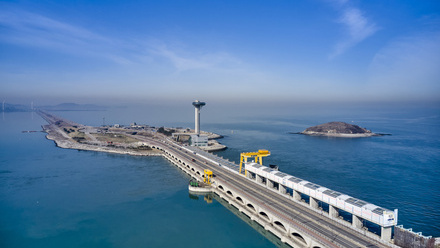Underwater hydrogen storage under development
If hydrogen is going to help maritime decarbonisation, it needs to be stored effectively and safely, and ports are leading the way.
The demand for offshore renewable energy is outpacing available energy storage facilities, yet underwater or subsea conditions could offer a stable and secure setting for storage, also stabilising renewable output.
Storing hydrogen is one of the greatest challenges ahead in terms of shipping decarbonisation, as the infrastructure has intensive demands and takes up significant land space. These facilities also pose safety risks for local communities and the environment, socreating a safe framework requires major investment.
Underwater hydrogen is being explored for its large-scale storage capacity, from rivers and reservoirs to the sea. In the latter, storage may reduce the need for expensive new infrastructure and be safer and more efficient than traditional storage tanks on land, if properly designed.
The sea offers vast space for storage, temperature control and reduced risk of leakage in a pressured environment compared to land. In addition, it is optimally located near offshore wind to support renewables, avoiding emission-heavy transportation. However, the high strength structures required can face corrosion from seawater whether it be storage tanks or pipelines.
Due to the challenges involved in handling and storing hydrogen, research has been underway for long-term solutions. Seawater storage takes advantage of the hydrostatic pressure of deep seawater. Structural strength and fatigue analysis is crucial here in these higher water depths, as shared in a paper by Wang et al (2024) published this month.
The study explores how underwater hydrogen storage systems are designed to offer a reliable energy storage, addressing the intermittency of offshore renewables. The co-authors call these systems “imperative” for the integration of renewables to the grid and towards sustainable energy.
Ports are pioneers of change
According to Stijn Vercammen, Senior Manager Climate & Energy at Deloitte: “Up to 42% of total clean hydrogen demand in the EU in 2050 could be located in port areas.” This was backed up by a series of three reports.
More investment in infrastructure is also recommended, and ports will undoubtedly play an important role. One example is seen at Port of Aberdeen. In partnership with Subsea7, the port received funding of £150,000 from the Scottish Government to investigate underwater hydrogen storage at its new South Harbour.
While supporting the energy transition, underwater hydrogen storage is all part of a bigger net zero strategy at Port of Aberdeenwhich involves reducing port emissions, and facilitating future fuels.
“This is a significant challenge with no single solution, but as one of the UK’s busiest ports, and at the heart of a major energy hub, we believe that Port of Aberdeen can play a leading role in this transition. What’s clear is that close public and private sector partnership, investment, and alignment is required to deliver this transformational change,” says Belle Sierina, Environmental Manager at Port of Aberdeen.
“A key initiative has been a significant investment in the renewable fuel hydrotreated vegetable oil (HVO), which now powers our vehicles, vessels, and equipment instead of diesel. We currently have nine electric vehicles, and our fleet replacement strategy informs how we will replace the fleet to achieve our net zero ambitions. We have also invested in more EV charging points and launched an EV salary sacrifice scheme to all employees.
“Aberdeen is the only UK port to take accountability for Scope 3 emissions from client vessels in its efforts to reach net zero. The port has three live projects which will install shore power infrastructure at nine berths, providing renewable electricity for vessels berthed alongside from Q1 2025.”
Discuss similar topics with the Ship Energy and Environment Special Interest Group.
Read more on green hydrogen: Green hydrogen projects planned for Port of Tilbury.
Image: Port of Aberdeen as seen from above; credit: Shutterstock.
Tell us what you think about this article by joining the discussion on IMarEST Connect.






